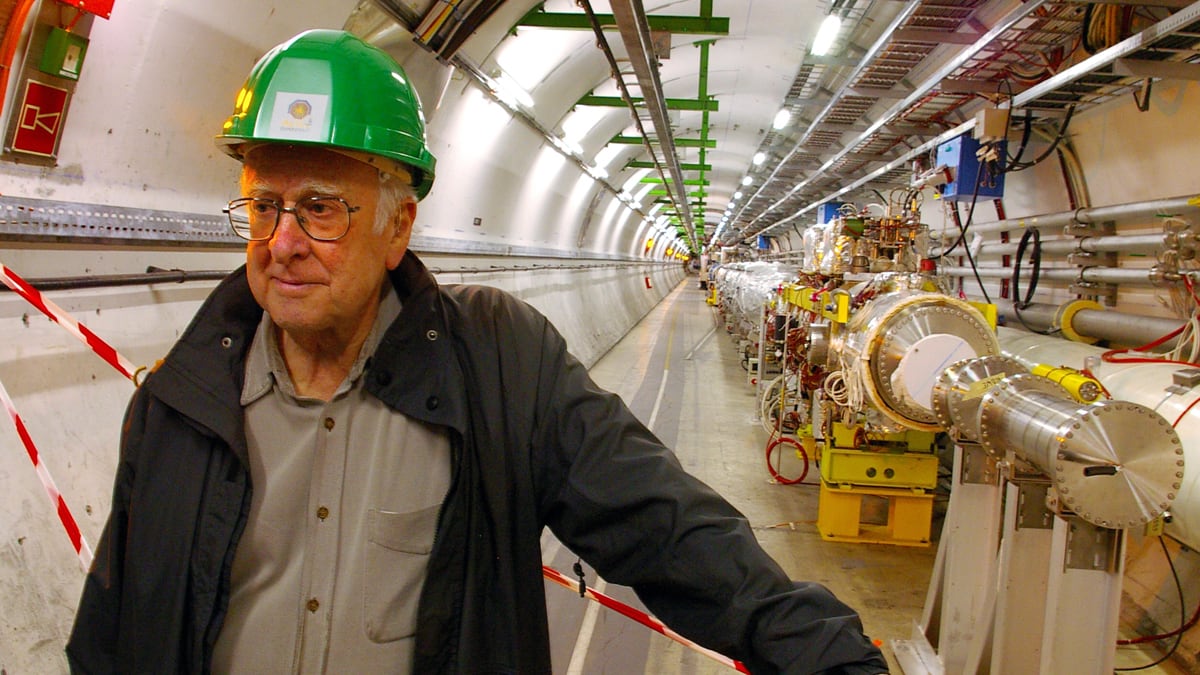Discovering the Higgs Boson would finally ignite the bonfire of the infinities. For half a century particle physics has been haunted by the specter of the “Infinity Puzzle”–its theories giving nonsensical answers of “infinity” for quantities that are experimentally known to be finite. With the Higgs established, physics will be able consistently to describe atomic properties to a precision of up to one part in a trillion–like measuring the width of the Atlantic Ocean to a hairsbreadth.
Three great theories–Maxwell’s theory of electromagnetism, Einstein’s Special Relativity, and Quantum Mechanics–individually make profound predictions that are completely accurate. However, in the 1930s when these three were combined into a complete theory of the electromagnetic force and of how light interacts with atoms, known as Quantum Electrodynamics, nonsense resulted. The theory seemingly predicted that the chance of some things occurring is infinite percent.
There is another force at work in and around the atomic nucleus. Known as the weak force, its most noticeable effect is in transmuting the elements, as in the Sun. Here too the theory spawned infinity, in what turned out to be more virulent ways than in the electromagnetic case.
In the case of the electromagnetic force, a panacea was found in 1947, excising infinity to reveal finite, correct, answers. The medicine worked because the photon–the quantum bundle of light and the carrier of the electromagnetic force–has no mass. For the weak force, the analogous particle, known as the W boson, is very massive. As a result, the infinity disease for the weak force was more virulent and for two decades resisted all attempts to find an antidote.
Peter Higgs, and at least five others, in 1964 independently found a way of sneaking mass into the equations in such a way that the medicine would still be effective. And so it has proved for 50 years. Key to the remedy was an assumption that the vacuum is filled with a field of force, known as the Higgs field, capable of slowing particles down and giving them mass. This is an interesting and far-reaching idea, but is that how Nature really works?

Of the half dozen inventors, it was Peter Higgs who, uniquely, drew attention to another consequence of the insight. If this field exists, quantum theory implies that under suitable circumstances it can be manifested in the form of particles, which are known as Higgs Bosons and have unusual properties. Producing the Higgs Boson, and verifying that it has these properties, would thus complete the modern theories of the fundamental particles and forces.
The problem, however, was that Higgs’s Boson was predicted to be very massive, and beyond the reach of any laboratory: until now.
The Large Hadron Collider (LHC), in Geneva, smashes protons together at high energy, simulating in the laboratory the conditions that occurred in the early universe, a trillionth of a second after the Big Bang. This is the epoch when the Higgs Boson is theorized to have been abundant and to have seeded the structured universe within which we now exist. More than four decades after the ideas were conceived, the experiments began in earnest last year. On December 13 came the news that something exciting was beginning to show–perhaps a Higgs Boson. However, no one seemed prepared to go the full distance and claim that it has been discovered, at least not yet.
There are two questions: have the physicists found a new particle and, if so, is it the Higgs Boson?
Answering the first is analogous to making repeated throws of dice to see if they land on one particular value more often than mere chance dictates. A few throws may give suspicions that the dice are loaded, but only if the effect persists after hundreds of throws, can you be sure. CERN (the European Organization for Nuclear Research where the LHC is located) is currently, in effect, midway between these two extremes. There are tantalizing hints, and by next summer they will have accumulated enough data–more throws of the dice, in effect--that the CERN teams will hopefully be more certain. However, confirming that this is indeed the long sought Higgs Boson, and not some other unexpected particle, will require many more experiments, lasting several years.
The LHC is currently operating at only half its planned power. So if this is indeed the long sought Higgs, this offers the prospect that a wealth of discoveries may be within the LHC’s reach when operating at full capacity. The hints are also consistent with theories that predict the Higgs to be but one member of new families of particles, including the seeds of the mysterious “dark matter” throughout the cosmos.
Twenty years from now the textbooks may say that December 13, 2011 was the day when the Higgs Boson first announced its presence. But that’s for the future. As for today: savor the excitement, and share in the anticipation of what we will learn in the coming months.






